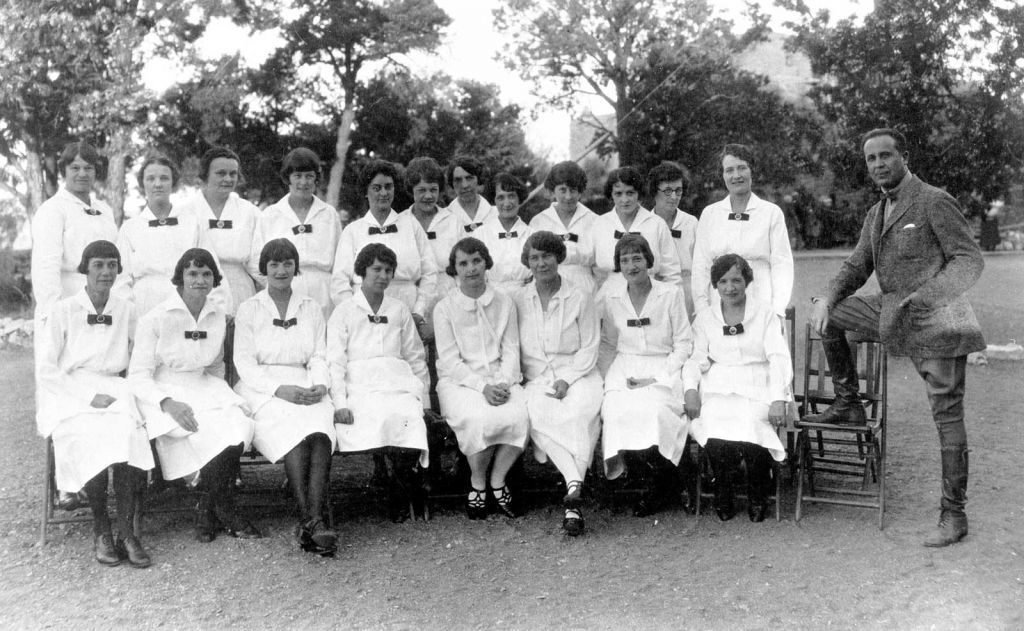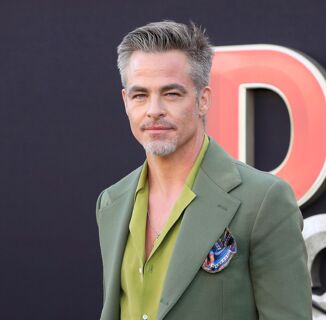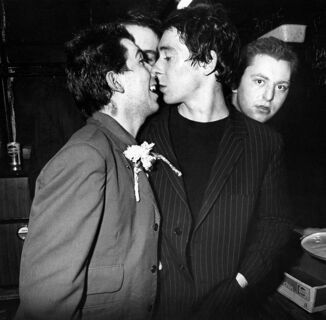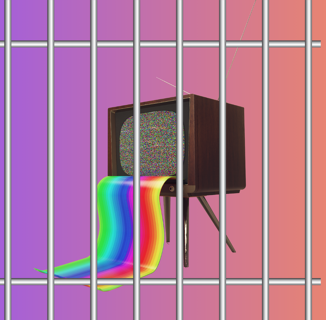1.
I’m not sure where to start.
Perhaps the turn of the 20th century, when a woman I’ve imagined up has just traveled over 1,000 miles for the promise of a new job, and she’s sitting in orientation, being told that the way she looks, the way she stands, the way she speaks — the way she serves— will make or break the company she’s working for. This heightened expectation befalls her as she puts on a black dress and then ties a long white apron over it. To our modern eyes, she might look like a nurse. But she’s a waitress. She’s a Harvey Girl.
Or perhaps it makes sense to start in 2022, where I exist, and where I learned about this imaginary woman and a hundred thousand real versions of her.
Maybe it makes sense to just start with the French toast.
Part of my job is to find interesting stories and then find publications that will let me tell those stories. Not too long ago, I decided that for some of these stories, I should combine my interest in food with my magnetism toward history. Discover not just how foods got made, but who brought them into the zeitgeist. What string of events made a food go from something someone makes for their family to something strangers crave?
I wrote an article about the history of bread and butter pickles, and then found myself googling a bunch of foods to dissect their histories and figure out whether there were interesting people behind them. One of those foods was French toast. And although I would find that French toast dates back to the Roman Empire, what kept coming up in my searches was something else. All this stuff about trains, Santa Fe, and a guy named Fred Harvey. Apparently, Fred Harvey served a stellar French toast in his restaurants along train stops for the Atchison Topeka and Santa Fe (AT&SF) Railway, and, later, aboard the trains themselves.
I set aside some time to research this Fred Harvey French toast in order to write a pitch. But in each sitting, I’d find myself ignoring the plate of eggy, syrupy bread in my periphery and instead would become distracted by Fred Harvey himself and, more importantly, by who he employed: a coterie of young, beautiful, white women known as “The Harvey Girls.” This female workforce was brought largely from the eastern United States to the western United States to work along the AT&SF Railway.
At first, I did still try to write a pitch about the French toast. I figured I’d make the recipe, write about the former glamor of train travel, talk about the invention of the chain restaurant. But my pitch wasn’t really about food; it was about these girls. The undercurrent, like the butter that melts out from beneath syrup poured over a newly-fried piece of French toast, was that I felt bruised by all of this. I wanted to save the Harvey Girls from an existence they had a hundred years ago (a spoiler alert: they don’t need saving). I became obsessed with figuring out who they were.
So here’s everything I found, and here’s what I learned after I found it.
First thing’s first: Fred Harvey. Harvey is famous for having invented the chain restaurant. “No Harvey’s yesterday, no McDonald’s today,” wrote Anne Owings in a 2003 Gastronomica article titled, “Hey Waitress!”
Harvey was an immigrant who came to the United States from England at the age of 17, in 1853. He got a job in a restaurant, learned the business, and would go on to open restaurants known as “Harvey Houses” along stops for the AT&SF Railway. He would also open souvenir and gift shops along the same route. Prior to this revelation, food options at railroad stops were scant. “Despite very long journeys, passengers and crews had little more for food than private picnic baskets and public slop,” writes Owings.
Harvey Houses offered quality food served in a clean atmosphere. It’s because of these restaurants Harvey is sometimes said to have “tamed the Wild West.” There’s another reason for that claim: The Harvey Girls themselves.
A basic definition is: Harvey Girls were waitresses who worked in Harvey Houses. There’s more to it, of course.
“The Harvey Girls, sometimes known as the women who ‘civilized’ the Wild West, were young Americans (well-groomed, well-behaved, single, and white) who left family and friends to head west as waitresses for the Fred Harvey restaurants,” writes Owings.
“For all of the [Harvey Girls,] the wages and tips they earned enabled them to be truly independent.”
“Fred Harvey felt that while the romantic idea of the Wild West might be a draw to tourists, its rough-and-tumble connotations would be more of a hindrance than anything else, as wealthy customers viewed western travel as dangerous and uncomfortable,” wrote artist Chandler O’Leary in a section dedicated to the Harvey Girls in his modern-day illustrated travelogue of Route 66. “To counteract this notion, Harvey committed to hiring only educated young women from the East and Midwest to wait upon, entertain and guide his guests.”
As Ashley Kath-Bilsky writes about the Slaton Harvey House, the reasons one became a Harvey Girl were wide-ranging:
“For most, there were no jobs for women in their community and it provided a means for them to be independent and also help their families,” writes Kath-Bilsky. “The Harvey House and Hotel provided respectable employment and a safe place to live. And let’s be honest. There were some starry-eyed Harvey Girls who were not only fascinated with the notion of seeing the American West, but had hopes of meeting their future husband there. For all of them, the wages and tips they earned enabled them to be truly independent. While the husband-seeking Harvey Girl might be saving for her bridal trousseau, for others that income provided them with a means of helping their families back home, and paid for them to have an education they could never have afforded before.
But Harvey wasn’t in the matchmaking business, he was in the restaurant business. So he gave these women a job but told them they had to work for him for a six-month period before they could go off and get married.
“Myths have celebrated how the Harvey Girls married ranchers and helped populate the West (indigenous Indians and Mexicans aside),” writes Jan Whitaker on Restaurant-ing Through History. “But in fact the servers were semi-indentured, with half their pay held back for six months to keep them from leaving the job. Not only was this meant to discourage resignations due to marriage but also to discourage the practice of working for a short time and then requesting a transfer farther west, all in the effort to finance travel through the West.”
It seems that while under Harvey’s employ everything about The Harvey Girls’ lives were managed. They lived in dormitories managed by den mothers, and there were strict rules as to their behavior and appearances. For work, they wore high-collared dresses covered in long, white aprons. Their hair needed to be perfectly coiffed, their appearance needed to be neat and clean. Contemporaneous pamphlets about and for the Harvey Girls are the kind of thing that make me wince a little when I read them.
“You are the person who represents Fred Harvey to our guests,” one reads. “If they are pleased with you and your service, they are pleased with Fred Harvey. It is no exaggeration to say that not only your own job but the success of The Harvey House itself depends on you. Our guests will be interested in: your appearance, your attitude, your service.”
“If they are pleased with you, they are pleased with Fred Harvey.” I picture myself, in my late teens, having just arrived in the Wild West to hold this pamphlet and eye a white apron, getting ready to put it on. I imagine a train rushing in, coming to a halt.
3.
In 1940, a former Harvey Girl, Gertrude Burton, wrote a letter to Clifford Funkhouse and Laymon Anson at Readers Digest. The pair had penned an article about the Harvey Girls. She described reading the article with “tears of joy that would not stop.” Burton goes on to describe her years as a Harvey Girl as ones of happiness and pride. In El Paso, she served governors, General Pershing, and Franklin D. Roosevelt, who at the time she served was Secretary of the Navy and at the time she wrote the letter was President of the United States.
“Thank you! Thank you! for that delightful article, and the thrill I got from reading it,” Burton wrote. “I am now fifty-nine years old and went to work for Harvey when eighteen, just here from Ireland. What a life! And what a country! Where a penniless girl can travel as I have done and have memories of much beauty to carry on. The fine, fine people I worked for and the fine people I met as I traveled in this glorious country of ours.”

As Burton’s glee and enthusiasm shows, for some, working as a Harvey Girl was indeed an opportunity, one that was welcomed with excitement and looked back on with fondness. For others, it was a thing to get used to. In Owings’ article, she interviews Verna Welsh, who traveled 1,200 miles to take a job as a hotel clerk at La Posada, one of Harvey’s most impressive hotels, in Arizona. The job offer had come from a former boss, whom Owings simply calls, “Mr. Winslow.” Upon arrival, Mr. Winslow told Welsh there was no hotel job, but she could work as a waitress if she’d like. “In other words,” writes Owings, “he had brought her there under false pretenses! He had snookered her.”
But not willing (or perhaps able, it’s unclear), Welsh accepted her fate and began work as a Harvey Girl. “Bound by the rules,” as Owings puts it, Welsh lived in a dormitory with other Harvey Girls, under the care of a den mother. She describes the dormitory as being covered in red dust but says she ultimately made it homey. It’s how she describes her first day of work that gives me pause, though.
Women in my generation, especially as the pandemic boils on, are pretty outspokenly juggling parenthood and work in ways that actually maybe isn’t possible.
“On Verna’s first day, her ‘most outstanding recollection’ was that one of the railroad men, ‘a smart aleck’ named Brian, used insulting language about her,” writes Owings. “He was ‘talking about the new waitress’ and ‘this and that.’ She still looked pained during our interview and would not reveal specifics. ‘I was pretty young and innocent.’”
As Owings notes earlier in her piece, Welsh was 80 at the time the interview occurred, “an affable, buxom woman with curled hair, spiffy glasses, and a pastel outfit.” It had been 65, maybe 64, years since she had begun work as a Harvey Girl. Welsh said she couldn’t remember whether she’d started in 1938 or 1939. The interview occurred in 2003.
Before the day she would find herself hearing “this and that” from Brian, whoever he was, Owings had already attended college for a year with a hope of becoming a school teacher and had worked for the state of Kansas’s a clerk in the Hotel Registration Division of the state government. She was booted when the democrats were defeated and a new administration came in. And then she followed the lead from “Mr. Wright,” which landed her in an apron and abiding by the rules of The Harvey Girls.
It’s from Welsh’s story that I get a sense of why The Harvey Girls disappeared. As Owings writes, World War II deeply affected the operating standards at Harvey Houses — paper plates and powdered eggs were mentioned — and the proliferation of cars ushered the flaming out of rail travel’s popularity. La Posada closed in 1957, part of “the gradual demise of the Harvey empire, whose economic remains and name his heirs later sold.”
In 1946, MGM released a film called The Harvey Girls. “It may be a rather lofty tribute to Fred Harvey’s girls, but it is a show,” read the contemporaneous review for the film in The New York Times. I’ve seen the film described as ridiculous, fluffy, and otherwise absurd. It is, I guess. But I found some moments that felt like real reflections of the tension between women, identity, marriage, and working.
The film stars Judy Garland as Susan Bradley, a woman who travels west to a town called Sandrock, AZ, to marry a man whom she’s never met but has been writing letters to. On the train, she meets a bunch of will-be Harvey Girls. The train’s arrival to Sandrock is met with celebration and a huge musical number. Then Susan meets her husband-to-be and he’s not who she’s expecting. I’m not quite sure whether this falls under the technical definition of catfishing, but, someone else has been writing his letters for him, to lure her out there. Actually, he’s an alcoholic who begs her not to actually make him get married; he’d rather not have to straighten up his act. She’s happy to oblige and becomes one of The Harvey Girls instead of settling down.
Over the course of the film, Susan falls in love with the man who had actually been sending her the letters, despite his involvement with the saloon across the street and an associate who wants The Harvey House out of town and is willing to burn it down to see to it. Before she admits that love to herself, she and her fellow Harvey Girls lament their lack of husbands, get in a brawl with the gals at the saloon, host a huge party, and end up bridging a friendship with the women at the saloon, taking the old Wild West sentiment of “There’s not room in this town for the two of us,” and burying it in friendship and camaraderie. In other words, they tame the Wild West.
She sings this as she’s doing what a man wasn’t able to; the hard work that needed to get done, while that man remains passed out, his entire body impotent and off to the side.
Like many musicals of the era, musical numbers drive the experience, and not always in a way that advances the plot. Big dance numbers in the party scene, for example, feature Ray Bolger in a way that’s clearly just meant to showcase, and have fun with, his talent. There are some standout moments, though. In “It’s a Great Big World,” Susan and two of her fellow Harvey Girls lament that they don’t have husbands yet. In that number, Alma, played by Virginia O’Brien, laments that she doesn’t think she’s pretty enough for anyone to want to marry her. Then in “The Wild Wild West,” probably my favorite scene of the film, Alma takes over the hard work of shoeing a horse after Bolger’s character faints at the thought. In the song, she talks about how she went to the Wild West to be swept up by a man. We aren’t talking fairytale, “swept off her feet,” kind of stuff here. She basically says she’s an easy get, if someone would just try. A particularly cringeworthy lyric:
“I don’t care if he’s a sheriff, or a real cattle rustlin’ heel; The property I’ve got ain’t hard to steal, your deal!”
She sings this as she’s doing what a man wasn’t able to; hard work that needed to get done, while that man remains passed out, his entire body impotent and off to the side. The way she moves her body throughout this number — sturdy choreography with motions that mimic a train operator — the way she puts her knee up to sing — it all reads, to my 2022 eyes, as a purposeful departure from the feminine. She’s not in a Harvey Girl uniform here, nor is she acting like a Harvey Girl. Perhaps that’s why she’s the character who I feel a magnetism toward more than any other in the rest of the film, including the same actress in earlier scenes. Notably, she isn’t in the film after this. Apparently, though she didn’t look it, she was pregnant. And thus she didn’t finish the film. I was unable to find out if that was a studio decision or O’Brien’s.
Throughout the film, there’s a man who’s trying to intimidate The Harvey Girls out of town. He shoots a gun through their window; later, he’ll burn the place down. But there’s a moment in between where a girl goes to the closet and finds a rattlesnake in it — he placed it there to scare them away. Rather than insert a shot of a slithering snake, the filmmakers had a shadow of an upright snake appear in the closet. There’s no other way to describe this snake than “erect,” and the shot, though fleeting, is both painfully invasive and blatantly erotic.
The first time I sit down to watch the film, I’m interrupted by my baby, who is sick with a cold and has a coughing fit bad enough that I end up taking her to the hospital in the middle of the night. I go back and forth on my thinking about this detail — is it an insignificant part of my story, enough so to type it here? Women in my generation, especially as the pandemic boils on, are pretty outspokenly juggling parenthood and work in ways that actually maybe isn’t possible. Watching a movie at night, having just gotten the kids to bed, only to be interrupted and in a pretty blockbuster way that lands you in the hospital, feels like a magnified version of that.
The women on screen aren’t juggling things like that; they’re juggling dreams and realities. I did at a point in my life, too. And that’s where I need to pause, to really scoop out the infected part of the cavity that is my entire feverish journey with this topic. When I met The Harvey Girls, something squirmed in my stomach. I thought, look at this upsetting way these women were spoken about, the way they were told to navigate the world, the way they were put in showy servitude. I thought, I am so grateful I’ve never lived a life like that, and never will. I thought, I live a century and a thousand miles away from where these women stand.
Do I?
5.
Here’s a particularly crazy thing, though I don’t even think it’s the most spot-on aspect of any of this when I compare it to my real life in the present. It’s notable, though: I had been working on this project for months when, only a few days ago, I was driving my baby daughter home from daycare and all of a sudden a very obvious thing hit me. When I was 19, I didn’t know what to do with my life. I wanted to be a writer, I’d enrolled in a college as an English major, and it wasn’t the fulfillment or challenge I was seeking. I had six months to spare before I could apply for a four-year conservatory program. I decided instead to take an “internship” at Disney World, 1,200 miles from home.
How many times have I felt like I wasn’t taken as seriously as the men in the room? How many times have I felt belittled, or worse, invisible?
It’s called the Walt Disney World College Program, and though it was a wonderful experience, I will not sugarcoat it — I essentially went to Florida to work in a gift shop for six months. And while I did, I was expected to wear a “costume” provided by my employer: a long dress with a high-collar dress and a white apron. The dress underneath was mint green, but, in terms of its silhouette, it could have been a Harvey Girl’s garb. I also was expected to abide by the “Disney look,” which among other things meant only natural-appearing makeup, a “gender-appropriate” hairstyle, and only one ring per hand, unless it was a wedding set, in which I could wear the two (so long as they were on the same finger, together). (It is perhaps appropriate to note that Disney recently updated its standards for cast member appearance to be more “inclusive.”)
While there, I lived in company-subsidized housing, in an apartment with other girls who were doing the same thing. And while there are distinct differences of course — there were men in the program, too — I can’t help but wonder if some of the operating standards of the program were actually borrowed from The Harvey Girls.
It’s less obvious links to my real life, though, that I think inspired my initial feelings about The Harvey Girls. As I said above, when I learned about them, I felt a pit in my stomach and felt like I wished I could save them from what they had endured. Words like “tamed” and “pleased with” caught my attention and held me there, giving me a heightened sense of being beyond this era. I let myself linger there, sure they were indentured servants and had been abused and were unhappy. But in my actual research, although some writers did take a more pessimistic tone about all of it, I really didn’t find evidence of that. Instead, I found a movement of women who comprised a huge work force and, at least in the eyes of Gertrude Burton, were seizing an opportunity — a life experience, the experience of life. While, as the film shows us, trying to overcome the tension of men in the workplace at every stop.
The snake in the closet. It stood out for me not just for its blatant and frankly unwelcome eroticism, but for the male ego, rearing its head. How many times have I been in a meeting and seen a display of the male ego at work? How many times have I felt like I wasn’t taken as seriously as the men in the room? How many times have I felt belittled, or worse, invisible? And Verna Welsh’s story. “He was ‘talking about the new waitress’ and ‘this and that.’” How many times has a man said, “this and that,” things I don’t always even want to repeat to myself, because it’s so overwhelmingly absurd to me that in this day and age, a woman is still the object of such things, simply for existing?
All of this to say: after spending months learning about, surrounding myself with, and analyzing The Harvey Girls, I think what I learned was that it’s hard to really analyze a forest you’re walking around inside. Yes, things have changed. Yes, I have been able to make decisions for myself in my life that I wouldn’t have had the latitude to make in the past. Yes, we have evolved. But so many of the themes I found while researching The Harvey Girls and then while watching the film about them are very much resonant with my own experience of womanhood, professionalism, and identity. They were, and I am, part of a sect of humanity who fight for identity and success and autonomy while constantly needing to remind the world it is our place to be here. The Harvey Girls may be historical, but they aren’t history. We’re on a continuum.
Like at the beginning, it’s hard to know where to end. Maybe just this: I never did make the French toast.♦
Help make sure LGBTQ+ stories are being told...
We can't rely on mainstream media to tell our stories. That's why we don't lock our articles behind a paywall. Will you support our mission with a contribution today?
Cancel anytime · Proudly LGBTQ+ owned and operated
Read More in Culture
The Latest on INTO
Subscribe to get a twice-weekly dose of queer news, updates, and insights from the INTO team.
in Your Inbox















